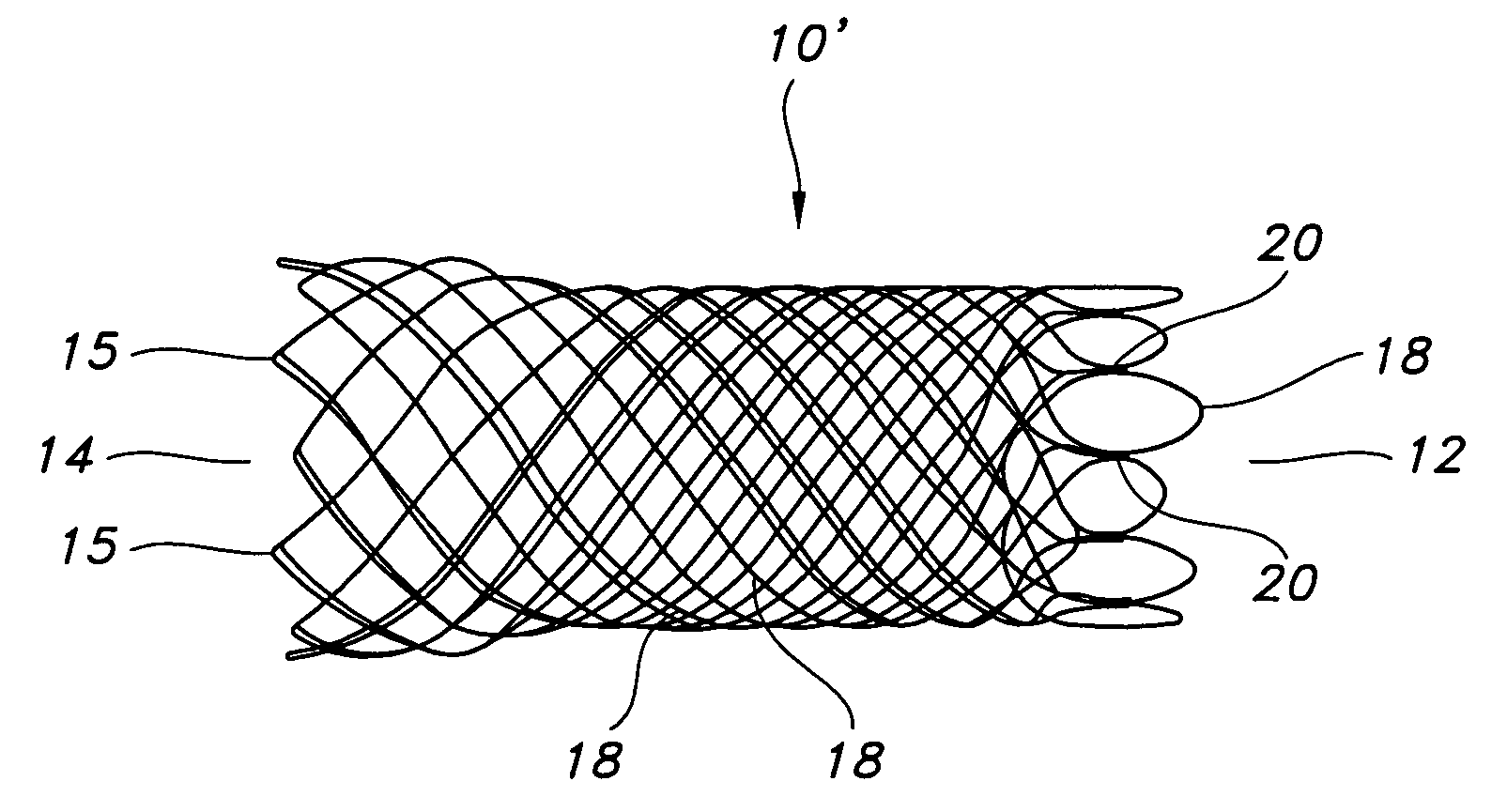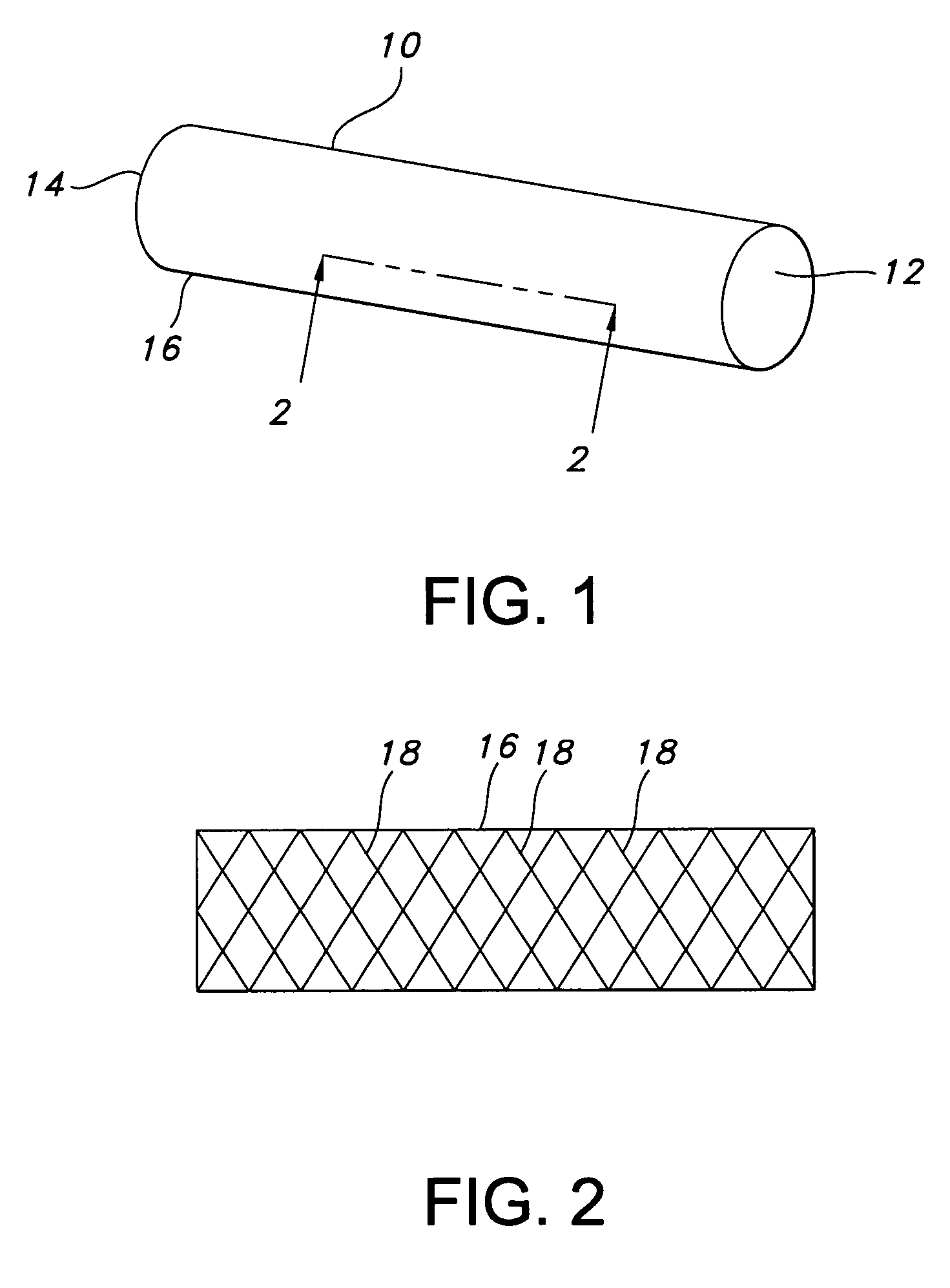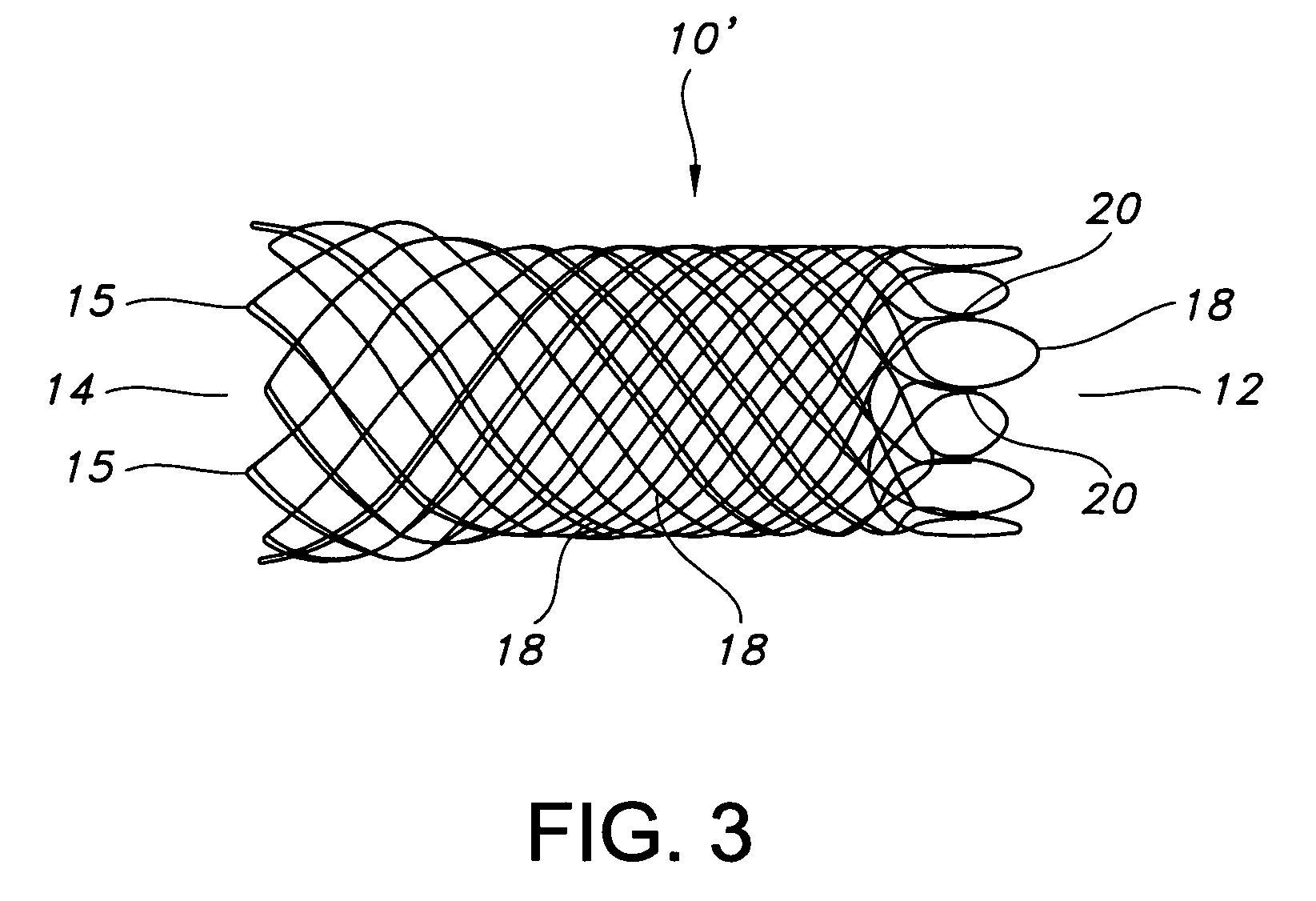Atraumatic stent with reduced deployment force, method for making the same and method and apparatus for deploying and positioning the stent
a technology of atraumatic stents and deployment force, applied in the field of stents, can solve the problems of undesirable failure, irritate bodily vessels or lumens, and sharp ends, and achieve the effects of improving external imaging of wires, enhancing visibility, and enhancing visibility
- Summary
- Abstract
- Description
- Claims
- Application Information
AI Technical Summary
Benefits of technology
Problems solved by technology
Method used
Image
Examples
Embodiment Construction
[0036]FIG. 1 depicts stent 10 of the present invention. Stent 10 is a hollow tubular structure having opposed open ends 12, 14 and having a tubular wall 16 therebetween. A portion of the tubular wall 16 is depicted in FIG. 2 as having a plurality of elongate wires 18 formed into the tubular wall 16. The elongate wires 18 traverse the length of the stent 10 in a direction traverse to the longitudinal length of the stent 10. The elongate wires 18 may be formed into the tubular wall 16 by braiding the wires 18, winding the wires 18, knitting the wires 18, and combinations thereof. Preferably, the wires 18 are braided to form the tubular wall 16.
[0037]As used herein the term braiding and its variants refer to the diagonal intersection of elongate filaments, such as elongate wires, so that each filament passes alternately over and under one or more of the other filaments, which is commonly referred to as an intersection repeat pattern. Useful braiding patterns include, but are not limite...
PUM
| Property | Measurement | Unit |
|---|---|---|
| diameter | aaaaa | aaaaa |
| bend angles | aaaaa | aaaaa |
| bend angle | aaaaa | aaaaa |
Abstract
Description
Claims
Application Information
 Login to View More
Login to View More - R&D
- Intellectual Property
- Life Sciences
- Materials
- Tech Scout
- Unparalleled Data Quality
- Higher Quality Content
- 60% Fewer Hallucinations
Browse by: Latest US Patents, China's latest patents, Technical Efficacy Thesaurus, Application Domain, Technology Topic, Popular Technical Reports.
© 2025 PatSnap. All rights reserved.Legal|Privacy policy|Modern Slavery Act Transparency Statement|Sitemap|About US| Contact US: help@patsnap.com



